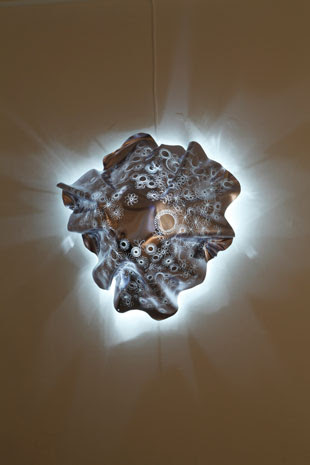| Kiyomichi Shibuya:You Must Not Open |
| Events |
| Published: February 21 2014 |
|
Kiyomichi Shibuya majored in Nihon-ga (Japanese-style Painting) at Tokyo University of the Arts. Although he no longer follows the regular methods of Nihon-ga, the path towards his present work relates closely to the methods and materials he learned then, for example in the use of Japanese paper and gofun. Shibuya sees Nihon-ga primarily as hanging scrolls and folding or sliding screens. (The term Nihon-ga itself was invented to make a distinction with Western pictures and their formats.) These traditional Japanese ways possess temporary, non-permanent, relationships to the spaces in which they are displayed, which Shibuya takes as akin to installation art in contemporary contexts. His notion informs the present exhibition, in which Shibuya seeks to make space itself into a work of art. The exhibition is composed of two gallery areas, connected to each other by an opening, which, however, is shut fast by a closed door. Visitors may access either area by its own entrance, but may not move across. One white-walled space is entirely empty, save for the door in the wall. The other space is hung with metalpoint and spirographic drawings. Metalpoint was an indispensable tool for drawing until the invention of the pencil, and had its peak in the 16th century. But it is less stable than pencil, so that colours change over time. Shibuya uses this feature to make an interplay between exhibition-space and time. Opening Reception:Feb. 12, Wednesday 18:00 - 20:00 全文提供:ART FRONT GALLERY Dates:2014 Feb. 12, Wednesday – Mar. 2, Sunday 時間:11:00 - 19:00 closed on Monday 会場:ART FRONT GALLERY |
| Last Updated on February 12 2014 |



